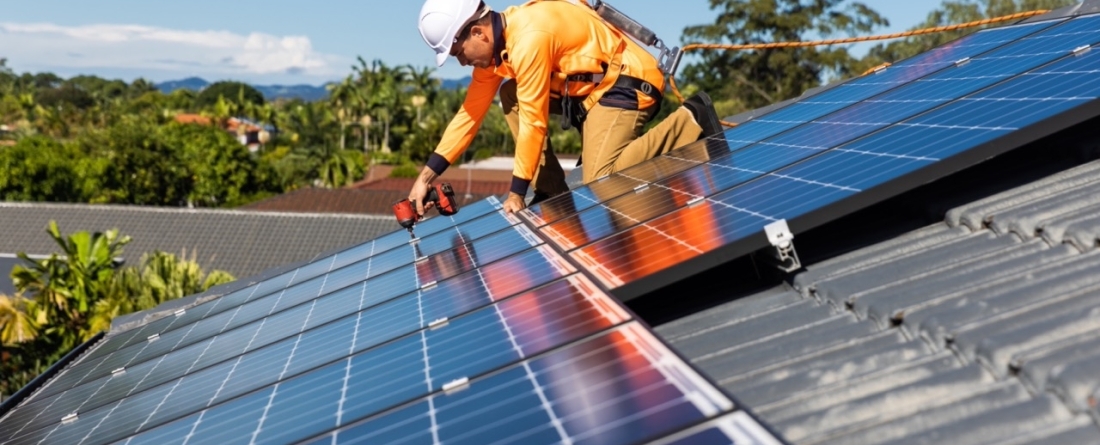
A new study published in Solar Energy, featuring CGS Assistant Research Professor Mengye Zhu, evaluates China's solar power potential through an analytical framework that assesses key factors contributing to the underperformance of solar photovoltaic (PV) farms at national, provincial, and plant levels. The study reveals that the actual power generation per square meter of solar photovoltaic (PV) farms is only one-third of its technical potential due to inefficiencies in technology, engineering challenges, and management issues.
As the world’s largest carbon emitter, China’s transition from coal-fired power to low and zero-carbon energy sources is essential to reducing global air pollution and reaching carbon neutrality targets. The country’s ambitious target of achieving carbon neutrality by 2060 highlights the critical role of solar power, especially solar PV technology as an affordable and abundant source of clean energy. Since the national feed-in tariff incentive, a policy providing a guaranteed, above-market price for producers, was introduced in 2011, China’s solar PV installed capacity has surged to 336 GW in 2022 with projections estimating a 16-fold increase in solar power generation over the next 40 years. However, the rapid development of solar PV brings forth significant environmental concerns.
“Despite its low carbon footprint potential, solar PV expansion presents critical environmental challenges, particularly in land use and ecosystem protection as current PV installations require 50-100 times more land than traditional energy sources like natural gas and coal,” said Yuxin Yin, a former research assistant at the Chinese Academy of Sciences and currently a doctoral student at EPFL, who is the lead author of the study. “Bridging the gap between technical potential and actual power generation, this analysis offers policymakers and industry stakeholders a guide to incorporate technical and operational considerations to improve land use efficiency and better align its solar PV deployment with its carbon neutrality goals.”
Analyzing 145 solar farms, the analysis reveals that the actual power generation from solar PV systems in China is significantly below its technical potential. On average, more than half of these solar farms achieve less than 40% of their potential capacity. Despite a maximum possible generation of 161.51 terawatt-hours (TWh) based on technical potential, solar PV systems only generated 49.80 TWh of electricity. Furthermore, while the potential installed capacity was 104.86 GW, the actual installed capacity was just 39.70 GW. Both installed capacity and the efficiency of energy use are not meeting their full potential. To improve the efficiency and effectiveness of solar PV deployment in China, policymakers need to identify and address the factors that limit the realization of solar PV’s technical potential.
The research indicates that the disparity in solar PV power generation in China stems from challenges in technology, engineering, and management. Technological issues, especially related to cell efficiency, are the leading cause of the performance gap, particularly in provinces such as Shandong, Liaoning, Jiangxi, and Zhejiang, where they account for 48.43% of the discrepancy. Engineering problems, including array spacing, are the main contributors in provinces like Gansu, Guizhou, and Shaanxi, contributing 38.55% to the gap. Although management factors like solar curtailment and system efficiency represent only 13.02% of the gap, their impact may grow as the solar PV sector evolves and systems age.
“The Chinese government has made strides in adopting higher efficiency PV cells and reducing solar curtailment. However, ongoing efforts are needed to address the challenges posed by increasing renewable energy penetration and improving system efficiency,” said Pu Wang, Chinese Academy of Sciences professor and corresponding author of the study. “Developing better grid infrastructure and energy storage solutions can help mitigate these issues, ensuring that solar PV systems contribute more effectively to energy needs.”
These factors not only exacerbate the gap in power generation but also highlight the need to address disparities in land-use efficiency (LUE). Many plants are not operating as efficiently as they could be, which represents a missed opportunity for maximizing energy output from available land. More than half of the solar PV plants evaluated are operating at less than 40% of their potential capacity. Only a small number of plants achieve more than 60% of their technical potential capacity-based LUE.
“As China continues to scale up solar PV installations, understanding and improving land-use efficiency will be crucial for maximizing power generation and minimizing land cover impacts,” said Mengye Zhu, CGS Assistant Research Professor and co-author of the study. “Technological advancements, such as improvements in cell efficiency along with effective management practices, will play vital roles in bridging the gap between actual performance and technical potential.”
By comparing technical potential with actual performance, the study provides actionable insights for policymakers, industry stakeholders, and researchers, highlighting the need for targeted strategies to overcome barriers related to technology, engineering, and management. By focusing on improving cell efficiency, addressing engineering challenges, and enhancing management practices, China can significantly enhance the efficiency and impact of its solar PV systems, contributing to its broader carbon neutrality objectives.
Check out the study to learn more.



